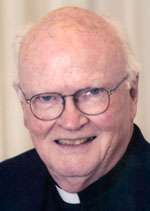Religious leaders in the United States have to recognize that over the past half century a “suburbanization” of the church in America has occurred. During this time, the numbers in religious communities have declined, parishes have closed and many parochial schools have disappeared.
There has been a sharp drop in the ranks of the religious communities that have staffed Catholic schools in the United States. At the same time, there is a disturbing rise in the number of low-income urban students in public elementary, middle and high schools who are receiving an indefensibly poor education.
These youngsters simply do not have highly motivated and well-qualified classroom teachers. Yet high-quality teachers are the key to high-quality education.
[hotblock]
What if religious community leaders addressed their numbers challenge by offering recruits an invitation to live in small communities, become appropriately credentialed for teaching as well as formed in the spiritual life, and apply for teaching positions in public schools that serve the poor? Presumably, they would be or become the high-quality teachers the public schools need.
In this scenario, school and small religious community would not share real estate, nor would the community have to be concerned with collecting tuition; in public schools, taxpayers take care of that. Community income would come from paychecks earned in the public schools.
Religious education would not happen in the public school, but character formation under the tutelage and example of a dedicated religious educator could and almost certainly would occur. Arrangements for formal religious education for students who want it could be made independently of the public school by members of the religious community. They would offer religious education to students who want it in buildings and, at times, under private control.
Faith would be needed to sustain the hope of religious leaders that this new strategy for educating the poor would work. The plan would put religious priests, nuns and brothers to work in public schools. They would live in small, noninstitutional, support communities that would, in God’s providence, attract bright, high-hearted young people who are willing to answer the call to celibacy.
Success of this kind of urban initiative need not be achieved at the expense of explicitly Catholic suburban education. In fact, if a sufficient number of recruits respond, some, with the encouragement of their superiors, may be open to reinforcing the ranks in the existing Catholic schools.
Nor would any church-state barrier block the employment of professed religious in public schools. If qualified and certified, they, like anyone else, could be hired. Their religious commitment and the living arrangements they choose would not present a First Amendment problem for the public schools.
The Holy Spirit is alive and well in the church in America. What is needed now on the part of those responsible for the recruitment, formation and deployment of nuns, brothers and priests is creative thinking and courageous decision-making in the face of great human need.
***
Jesuit Father Byron is university professor of business and society at St. Joseph’s University, Philadelphia. Email: wbyron@sju.edu.
PREVIOUS: Faith in a work of fiction a good fit for the Year of Mercy
NEXT: Showing support and solidarity at Omaha’s Islamic center




Really?!!! The solution to the paganization of America is to put padlocked nuns in the public schools?!!! Think again. We need to revisit the free Catholic education of past years. Once, as I was writing out a tuition check to our local Catholic school I picked up the phone and called my mom. I asked her how she and Dad had managed to put 11 children through Catholic schools. I was so surprised when she told me that when we all went through Catholic schools there was no tuition. Today there are so many Catholic kids from great Catholic families in the public schools because the cost of a Catholic education is ridiculous. That is scandalous. We need some serious creative thinking to address the loss of Catholic kids to the public schools. It can be done. It must be done. Don’t put the nuns in the public schools that is just plain stupid.